
ARNOLD ARBORETUM
‘Donald Wyman’ flowering crabapple was discovered as a spontaneous seedling on Peters Hill of the Arnold Arboretum of Harvard University in 1950. It was named in 1970 in honor of Donald Wyman (1904-1993) who served as horticulturist at the Arboretum from 1936-1970.
Celebrated as one of the most cherished flowering crabapples in the Arnold Arboretum of Harvard University’s collection of over 154 taxa (kinds), Malus ‘Donald Wyman’ was named after the highly accomplished Donald Wyman (1094-1993), Arboretum horticulturist for over 35 years. Wyman hailed from Philadelphia, PA, and after receiving a Ph.D in horticulture from Cornell University, joined the Arboretum in 1935. He worked for six months without pay and was made horticulturist in 1936.
Wyman’s initial work included revitalizing collections that were in decline (Wyman began at a challenging time in the Arboretum’s history, following the recent passings of the Arboretum’s inaugural director Charles Sprague Sargent and keeper of the arboretum Ernest Henry Wilson), relaunching plant labeling and mapping initiatives, and focusing on new plant introductions. In the late 1960s alone, he brought in over a thousand species and varieties new to the Arboretum. During his tenure at the Arboretum, Wyman authored thousands of articles (he was especially fond of flowering crabapples) and five texts on temperate woody plants, including the popular Wyman’s Gardening Encyclopedia and Trees for American Gardens, held office in many organizations, and received numerous awards and accolades. Wyman’s devotion to ornamental horticulture is unparalleled, as is evident from his abundant contributions to the industry during his long and fruitful career.
‘Donald Wyman’ flowering crabapple is highly valued at the Arboretum, not only because of the connection to a horticultural legend, but also because it is one of the most stunning crabapple varieties in the living collections. The original plant and type specimen is still growing along Peters Hill Road, despite several setbacks over the years. It has weathered typical maintenance and corrective pruning measures, significant storm damage in 2008, and on March 3, 2018, Winter Storm Riley caused a major limb to fall. Scions—stem cuttings used for grafting—were harvested and grafted onto Malus understock to preserve this important specimen in the event that it would not survive. Finally, a nor’easter on October 27, 2021, with hurricane-force winds brought the once stately tree down to just several feet off the ground. Yet, it perseveres with grace, despite its much smaller stature.
Weathering the elements in Boston is part of this particular tree’s story. At this point in its lifecycle, it isn’t an exemplar of the full potential of the ‘Donald Wyman’ crabapple. (For that, read below or visit 572-2016*B.) But the tree stands testament to our commitment to caring for our collections—scars and all.
Larger specimens grow pink buds in spring which open to reveal fragrant, single white flowers ¾- to 1-inch in diameter, profusely showering the tree. Blooms give way to large, vibrant red, glossy 3/8-inch diameter crabapples, which is the pièce de résistance of this small tree. Fruit persists throughout autumn and into winter and only abscise after shriveling to half of its original size. Birds are attracted to the fruit. Foliage is a lustrous medium green changing to glowing amber gold. It has an attractive rounded crown. ‘Donald Wyman’ flowering crabapple exhibits good resistance to major apple diseases; although it has shown susceptibility to apple and leaf scab. It is available for purchase in select retail garden centers.
Massachusetts
Viewing this plant in-person? Look for these defining characteristics:
1

2

About Our Collection
Fun Facts
Stats
- Living Specimens
- Specimens Dead or Removed
- First Addition
- Most Recent Addition
- Tallest Specimen
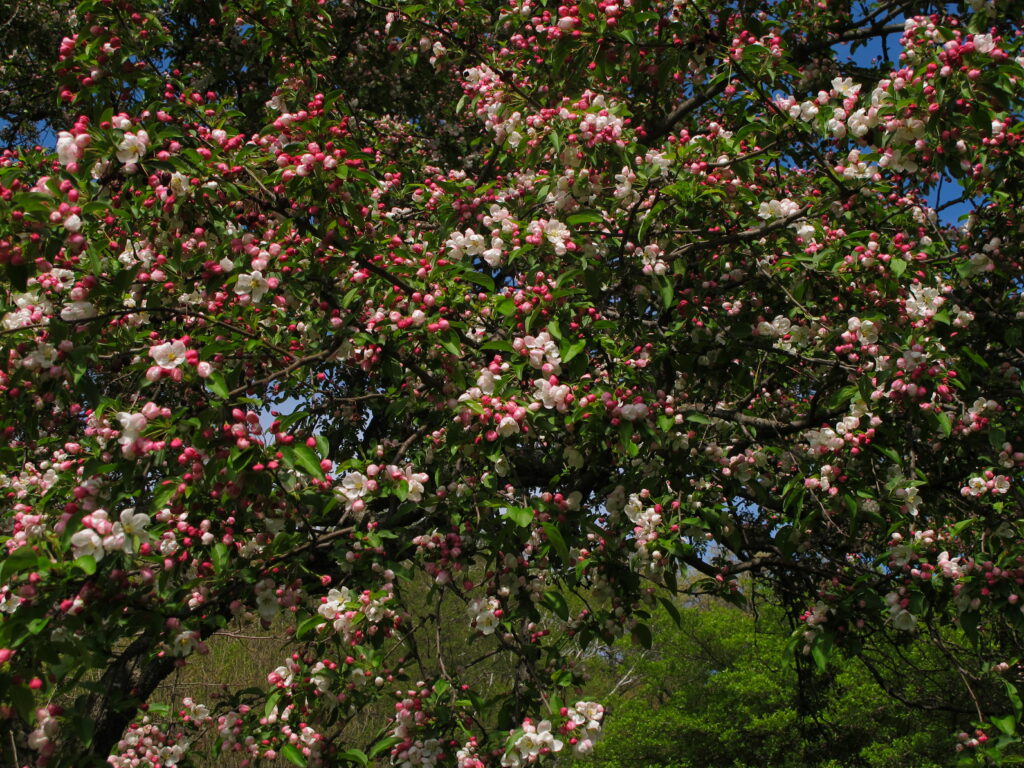
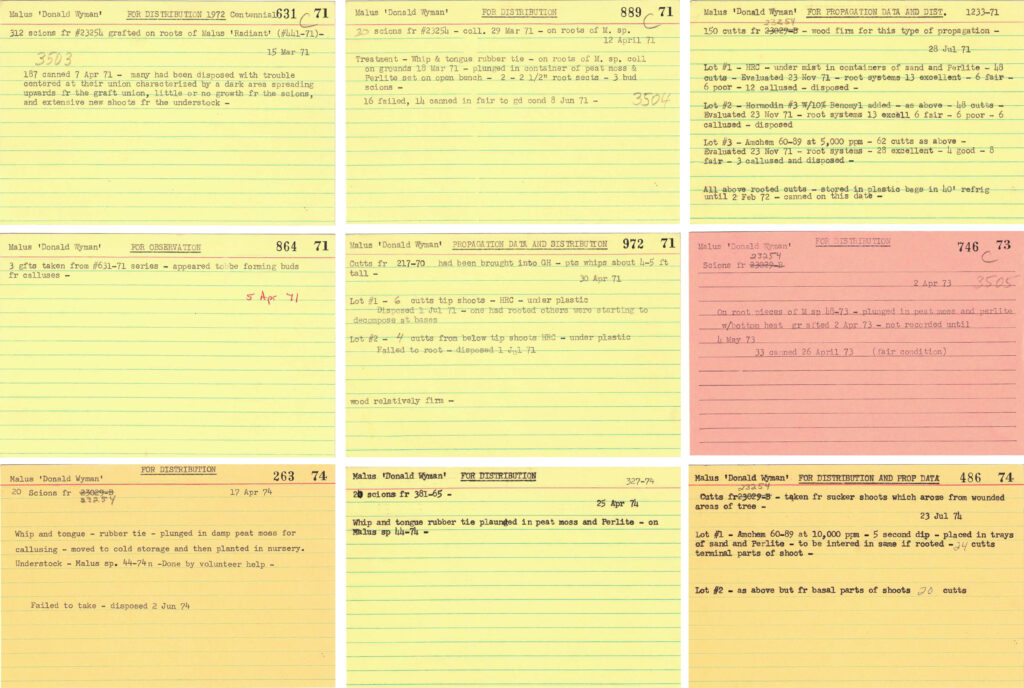
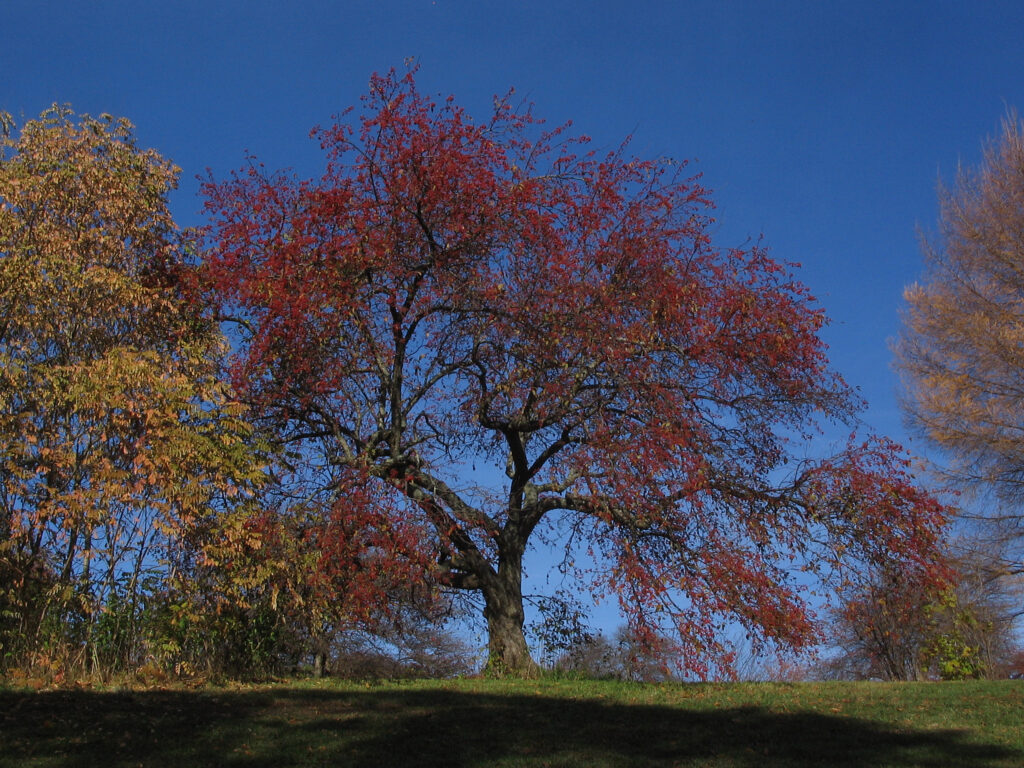
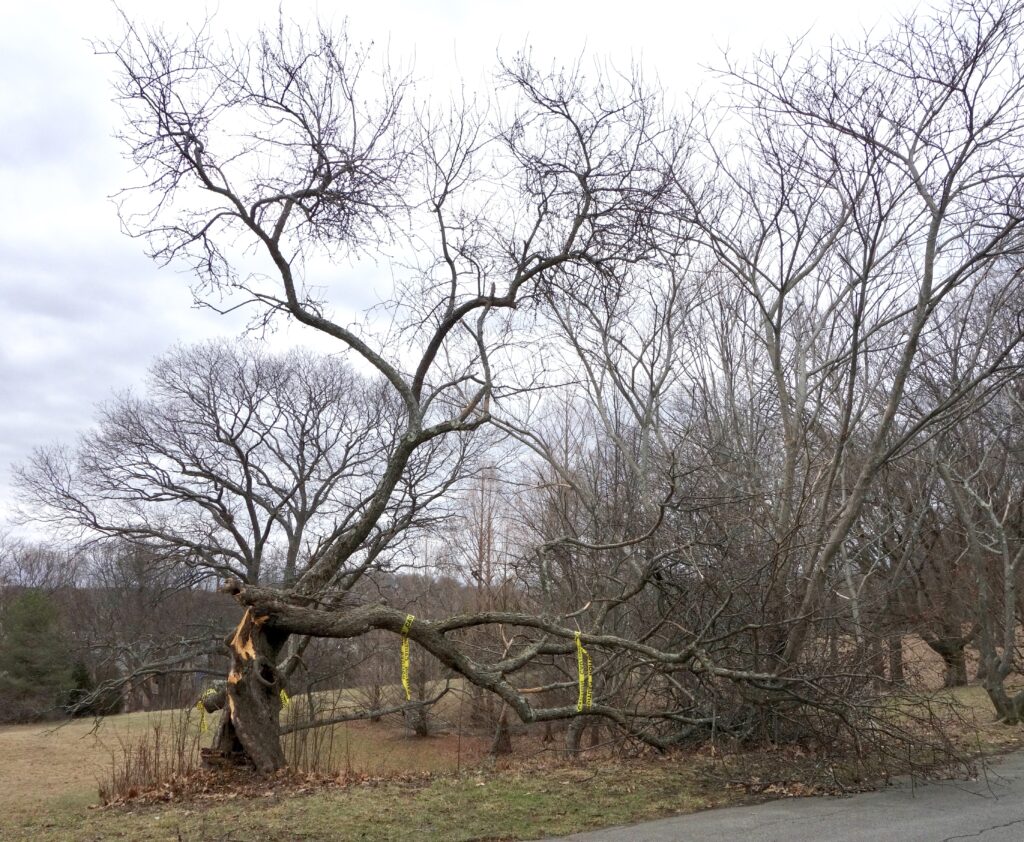

William (Ned) Friedman
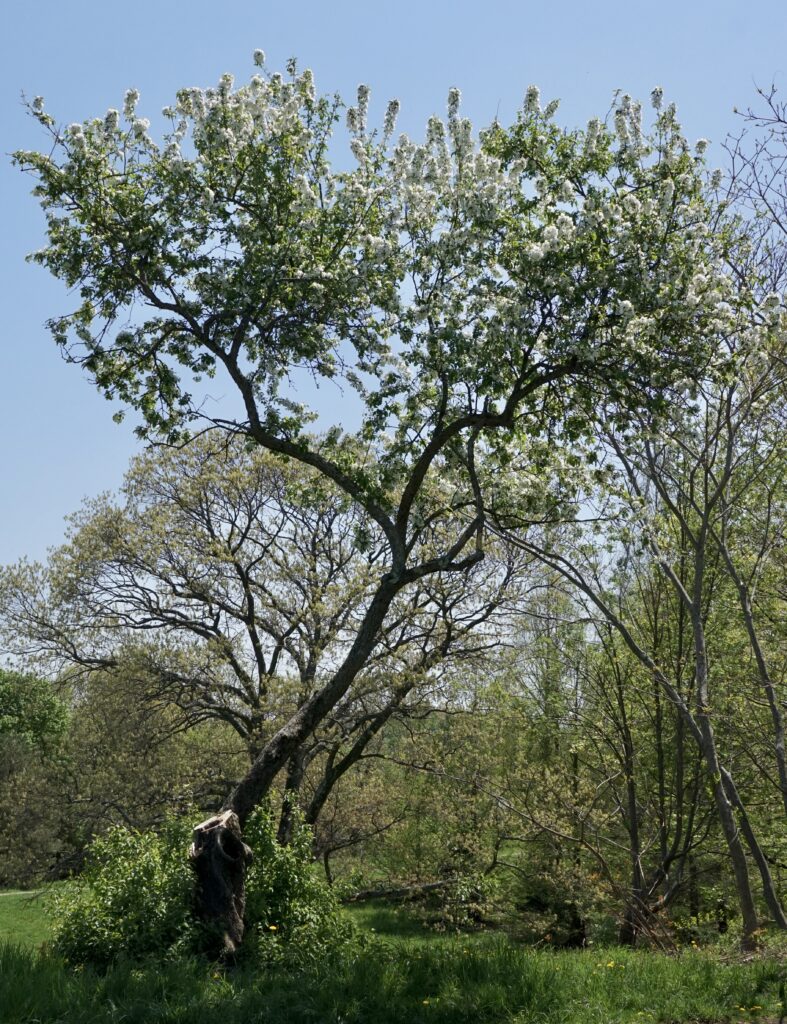


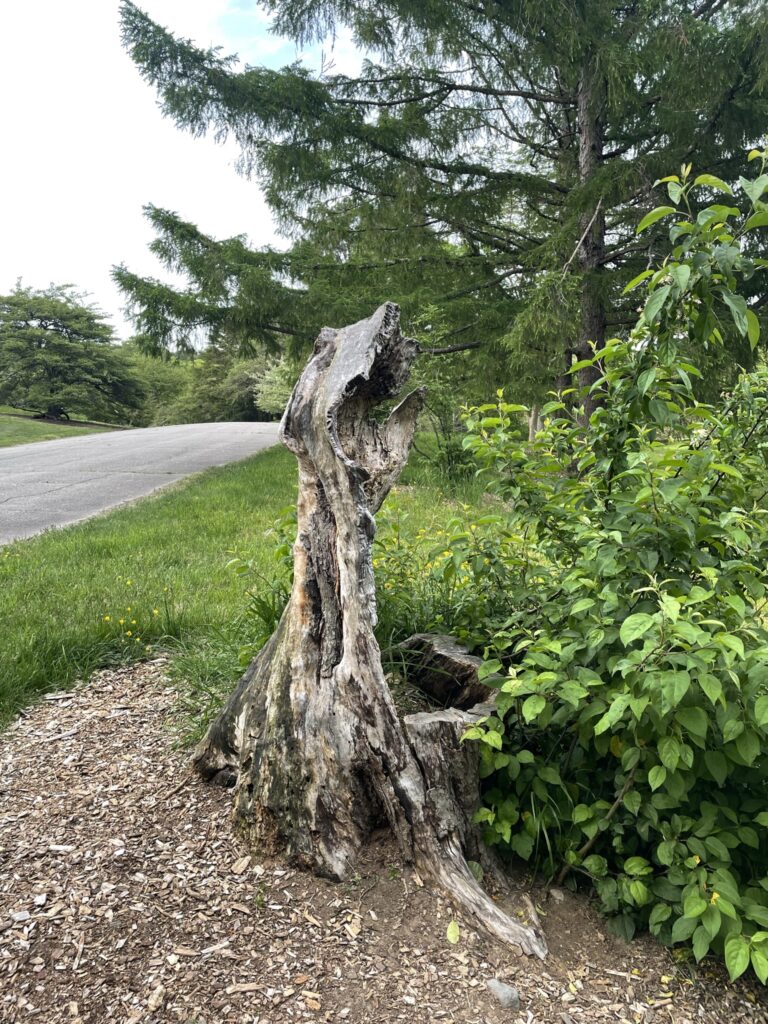
11 Living Specimens
| Plant ID | Accession Date | Received As | Origin | Source |
|---|---|---|---|---|